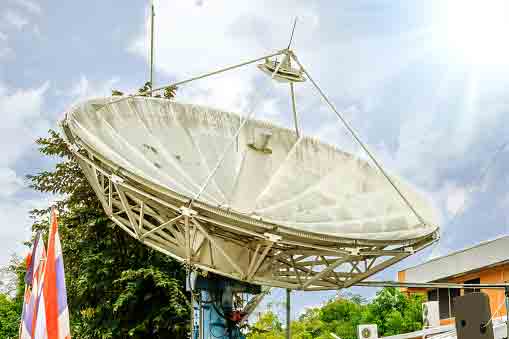Shots Fired in Battle of the C-Band

WHY THIS MATTERS: C-band spectrum becomes the latest pawn in the ongoing war over bandwidth allocation.
Broadcasters and wireless companies are at odds over how to advance 5G without potentially forcing those same broadcasters and cable operators into retreat.
The idea of the National Association of Broadcasters defending its spectrum from turf-hungry wireless companies being aided by the FCC sounds like a throwback to the days of the broadcast incentive auction. But this time what’s at stake is the C-band spectrum broadcasters use to get their national programming to a local audience.
That being the case, the NAB is getting an assist from a host of players, from National Public Radio — which is also warning about a rush to share spectrum in the band (3.7-4.2 GHz) — to multichannel video programming distributors and studios that also depend on the band to get their content to viewers and listeners.
The message is essentially the same: Sharing the band could mean unacceptable interference and added cost, so the FCC can’t rush into anything, no matter how eager it and wireless companies may be to advance the next-generation wireless standard (see Need to Know).
C-band spectrum is used to deliver TV programming to thousands of MVPD headends, more than 1,000 network-affiliated TV stations, over-the-top providers and 1,275 public radio stations reaching 42 million people.
Those C-band users are pushing back on wireless companies’ arguments that they can share spectrum, using various technical protections, without interfering with incumbents, or that broadcast and pay TV users can be repacked into a “much” smaller space — a statement with an all-too-familiar ring — to make room for wireless broadband in a bifurcated band, as CTIA–The Wireless Association is advocating.
Broadcasting & Cable Newsletter
The smarter way to stay on top of broadcasting and cable industry. Sign up below
The FCC is preparing a report — the Mandated by the MOBILE NOW Act — on the feasibility of current C-band satellite spectrum users sharing their 3.7-4.2 GHz spectrum band with terrestrial wireless broadband users.
That report needs to be in the hands of the appropriate committees by Sept. 23, 2019, so there is still time to hash out the issue.
Public Concerns
NPR is waving a big caution flag. Its advice is to divide in order to conquer in the race to 5G. That means reserving some C-band spectrum exclusively for wireless, with guard bands and licensing requirements, the way the FCC did with the auctioned broadcast spectrum — at least the licenses it auctioned to wireless companies — rather than mandate sharing of the same spectrum by both commercial wireless and fixed satellite users such as NPR and TV stations and cable operators.
NPR dropped some familiar programming names whose distribution depends on C-band spectrum, including Morning Edition, All Things Considered and Marketplace.
But T-Mobile is pushing for some mixed-use approach of the spectrum, and said that shielding and filtering can allow for it to be shared.
NPR isn’t buying it. “There is currently no shielding technology that could provide the kind of dynamic, all-encompassing protection that would be required to protect against interference from mobile devices,” the public broadcaster said. “Similarly, filtering can be useful to block out interfering signals within a certain range, but it reduces the effectiveness of the downlink signals it protects, and it does not create the kind of clear, interference-free transmission zone that is essential to public radio’s programming distribution needs.”
NAB is definitely on the same page, as is NCTA-The Internet & Television Association. It wants the FCC to conduct “detailed” technical proposals for sharing C-band spectrum rather than simply “assume that technical solutions will appear that will allow incompatible services to share spectrum.”
Contributing editor John Eggerton has been an editor and/or writer on media regulation, legislation and policy for over four decades, including covering the FCC, FTC, Congress, the major media trade associations, and the federal courts. In addition to Multichannel News and Broadcasting + Cable, his work has appeared in Radio World, TV Technology, TV Fax, This Week in Consumer Electronics, Variety and the Encyclopedia Britannica.

